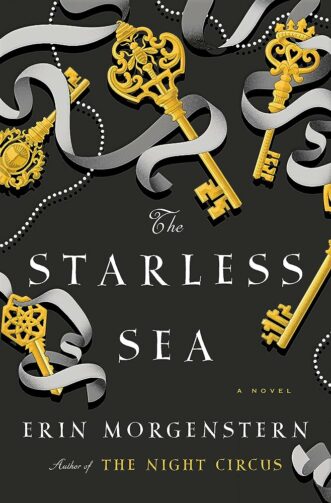
The Starless Sea
Overall, I'm not sure I'd like to sail The Starless Sea - it seems quite an inhospitable place. That being said, I would definitely dive back into Morgenstern's imagination for another journey.
The Starless Sea has been on my to-read list for a while because I enjoyed The Night Circus, Erin Morgenstern’s first novel. It was fantastical and magical and just… different.
Also, I really appreciate the fact that she’s a NaNo writer that’s made it big. She’s someone to aspire to!
That said, does this new tale hold up to her breakthrough tale? Let’s take a look in this The Starless Sea book review.
My The Starless Sea Book Review: Time to Swim Through the Confusion
Let me answer that above question right away – no. I don’t think this novel is as good as The Night Circus, and that’s mainly because it’s confusing as heck.
There’s a lot going on in this book, and that isn’t a good thing. The story meanders around a lot in the beginning, jutting from fragment to fragment, before eventually settling in on Zachary Ezra Rawlins, a totally normal grad student doing a thesis on video games.
Zachary is eventually sucked into this underground world (literally) of fiction and fable, caught in a labyrinth of books, cats, and questions. I would try to explain more… but I honestly don’t know how to. I’m not sure what this book is about.
That’s one of the main problems here. The author weaves so many myths and legends and lore, but the threads are all coming loose. At the beginning of this epic tale, I had assumed everything would be pulled together by the end, the saga sewn to a close.
Instead, I just got a frayed and tangled mess.
Why I Hated the Perspective Shifts

One of the most irksome parts of this book is how every chapter alternates between the main story and a short fable. Eventually, these are kind of tied into Zachary\’s story, but for the majority of the book, they are disconnected and irrelevant. I found myself wanting to skip them so I could get back to the main plot.
I get why the author did this – she wanted to create a sense of mystery and myth and show that all stories are connected, and honestly, the tales on their own aren’t bad. But when they’re breaking up an already loosely-held-together plot, it’s just too much.
A Lack of Purpose

Once Zachary makes it to the underground library, he just kind of… meanders around. I kept waiting for him to demand answers and finally figure out what was going on… but he just hung out and went with the flow. He didn’t have any purpose, but rather, just let the plot carry him along where and when it was convenient.
Maybe that was intentional. I can almost see how this would work in the context of the story… but the problem is, it doesn’t read well. It’s boring. As a reader, we want to see the main protagonist faced with a problem, a reason for the storyline to exist. In Zachary’s case, we have no real idea why he’s involved with this place, and neither does he.
What Was the Point of It All?

Zachary isn’t the only one without purpose in this tale. The main villain (if you could even call her that), Allegra, tries to derail the plot because… I don’t know. It’s never really clearly explained, and she’s never a real threat. She lurks in the background as a temporary wrench in the plans, but she’s easily cast aside whenever necessary.
There are also a few secondary layers in this story, including romances between a set of characters lost in time (literally) and a set of characters who are immortal beings. These relationships are never fleshed out, yet they’re integral to the plot because… I don’t know.
And how can we forget Zachary’s love interest, Dorian. He’s older than Zachary, smells good, and the pair have had about an hour of conversation before falling deeply in love with one another. This is supposed to be romantic, but honestly, I found it unbelievable and weird (especially since they just seemed to assume the other was gay without ever confirming).
We’ve also got the repeating imagery of a bee, a key, and a sword. These icons are repeated endlessly in the text. Do these act as deep metaphors that drive the story’s plot? Not really. They do become literal devices in the story, but I’m not sure why they had to be repeated ad nauseam. Just add it to the list of things I don’t understand.
The Spell of the Harbor
Despite its flaws, this book is filled with imagination. Honestly, too much imagination. I think if the author had reeled it in a bit and focused on just a few of the ideas she had, this would have been more successful. As is, I think things just got out of hand.
I found the beginning of this book was the strongest, when Zachary was becoming immersed in this strange and beautiful world. The middle dragged as he stumbled his way along half-heartedly looking for answers. The end came in a blazing flash of light that was hard to put down, but unfortunately, it left me with more questions than I had before.
